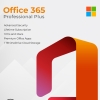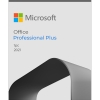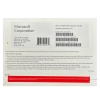Safeguarding Your Digital Domain: A Comprehensive Guide to Website Cybersecurity
In today’s interconnected world, websites have become the lifeblood of businesses, organizations, and individuals alike. From e-commerce platforms to informational blogs, websites hold valuable data and serve as a bridge between creators and consumers. However, this digital age also brings forth an array of cybersecurity challenges that can compromise the integrity, confidentiality, and availability of your online presence. In this comprehensive guide, we’ll delve into the world of website cybersecurity, exploring essential practices and measures to safeguard your digital domain.
Understanding the Cybersecurity Landscape:
Before we dive into the specifics, let’s take a moment to understand the cyber threat landscape. Cyberattacks come in various forms, including but not limited to:
- Malware: Malicious software, such as viruses, worms, and Trojans, can infiltrate your website and wreak havoc on your data and visitors’ devices.
- DDoS Attacks: Distributed Denial of Service attacks overload your website’s servers with traffic, rendering it inaccessible to legitimate users.
- Phishing: Cybercriminals impersonate legitimate entities to deceive users into divulging sensitive information.
- SQL Injection: Attackers manipulate your website’s database through poorly sanitized inputs, potentially gaining unauthorized access to sensitive data.
- Cross-Site Scripting (XSS): Malicious scripts are injected into your website, often targeting users’ browsers and their personal information.
- Brute Force Attacks: Hackers attempt to gain access by systematically trying various username and password combinations.
Essential Cybersecurity Practices for Your Website:
- Regular Software Updates: Keep your content management system (CMS), plugins, themes, and all other software up to date to patch vulnerabilities that attackers might exploit.
- Strong Authentication: Enforce strong passwords and implement two-factor authentication (2FA) to add an extra layer of security to user accounts.
- Web Application Firewall (WAF): A WAF acts as a barrier between your website and potential threats, filtering out malicious traffic and requests.
- Secure Socket Layer (SSL) Certificate: Implement SSL to encrypt data transmitted between users and your website, ensuring sensitive information remains confidential.
- Backup and Recovery Plans: Regularly back up your website’s data and have a recovery plan in place to quickly restore your site in case of a breach or other disaster.
- Security Audits and Penetration Testing: Periodically assess your website’s security posture through audits and penetration tests to identify vulnerabilities and weaknesses.
- User Privilege Management: Limit user access based on their roles to minimize the potential damage in case of a compromised account.
- Content Security Policy (CSP): Implement CSP to control which sources of content can be loaded on your website, reducing the risk of XSS attacks.
- Employee Training: Educate your team about cybersecurity best practices, emphasizing the importance of recognizing and reporting potential threats.
Staying Informed:
- Stay Updated on Threats: Keep yourself informed about the latest cybersecurity threats, trends, and vulnerabilities by following reputable security blogs and news sources.
- Security Community Participation: Engage in online forums, conferences, and workshops related to cybersecurity to learn from experts and peers.










